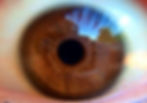
In August, the FDA issued a recall for the online vision test developed and marketed by Visibly (formerly Opternative), because the company had not received authorization from the agency. The authorization process requires that the device be “at least as safe and effective,” or “substantially equivalent” to a legally marketed device. Last week, the AOA announced that it has requested that the FDA also recall 1-800-Contacts’ ExpressExam online vision exam, on the grounds that it is “strikingly similar” to Visibly’s already-recalled test.
“Ocular telehealth” can mean many things, from an app that performs a simple vision screening to a comprehensive remote-controlled exam with direct doctor-to-patient communication. The Visibly approach occupies a space in between: the test is self-administered online and takes approximately five minutes. The results are submitted to an Optometrist or Ophthalmologist in the consumer’s state, and a prescription is issued within 24 hours. The test appears to be popular among consumers: before the recall, Visibly was marketed in 39 states, and the company claims to have conducted hundreds of thousands of tests with a satisfaction rate over 96%.
The approach is controversial in the professions, for obvious reasons. One of the biggest concerns is that patients will see the brief online test as a substitute for a comprehensive eye exam. It’s little wonder that professional organizations at both the state and national levels have lobbied against allowing this type of test.
It’s unlikely that Visibly or other companies with similar approaches will give up easily, and government generally supports efforts that increase accessibility and reduce the cost of health care. However, some form of ocular telehealth could conceivably benefit private practices by providing easier access for patients. Over 250 eye doctors, mostly ODs, are already using a system called EyeCare Live, which enables app-based acuity, Dry Eye, SPEED, Amsler and Halo tests, and facilitates secure communication between doctor and patient. But there’s no substitute for being there, and patients need to understand that. They need to know how important it is to have a comprehensive, face-to-face (or eye-to-eye) examination. We’re already fighting the battle against online operators in the optical; in the future we may have to do it in the exam lane as well.
